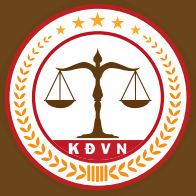Technical Safety Inspection for Machinery with Strict Safety Requirements
1. What is Safety Inspection?
- Safety inspection, also known as occupational safety inspection or equipment safety assessment, is the process of evaluating and testing systems, equipment, procedures, or products to ensure they meet safety standards and comply with legal regulations. This essential task helps protect workers and equipment during production.
- Safety inspections are particularly necessary for machinery and equipment that carry high risk, where incidents could directly impact both property and human lives. This activity not only ensures the safety of employees but also enhances the companys reputation and accountability under the law, especially in accordance with Circular 36/2019/TT-BLĐTBXH.
- The safety inspection process includes assessing potential hazards and existing safety measures to mitigate those risks.
2. Why is Technical Safety Inspection Necessary?
- Conducting safety inspections helps create a safe working environment for employees, reducing workplace accidents and occupational diseases. Timely inspections allow for the early detection of equipment malfunctions and technical issues, enabling companies to address them appropriately.
- Here are some essential reasons for conducting equipment safety inspections:
+ Early detection of abnormal equipment issues.
+ Increased productivity and operational uptime of machinery.
+ Reduction of costs related to workplace accidents and occupational diseases.
+ Compliance with legal regulations regarding occupational safety.
+ Building trust with employees, customers, and regulatory authorities.
3. List of Machinery and Equipment Required for Safety Inspection
To manage workplace safety and hygiene, the National Assembly has enacted various laws and decrees, including Decree 44/2016/NĐ-CP, Decree 140/2018/NĐ-CP, and relevant guiding circulars.
4. Safety Inspection Process for Equipment and Machinery
The safety inspection process typically involves five steps:
1. The company contacts a qualified inspection agency and provides a list of equipment that needs inspection.
2. A contract for inspection is signed, with terms agreed upon by both parties.
3. An appointed inspector is dispatched to conduct the inspection and develop a plan.
4. The inspector prepares an inspection report and concludes on the technical safety of the equipment.
5. If the equipment passes the inspection, the inspector affixes a safety seal if not, the company must repair or replace the equipment.
The Vietnam Inspection and Training Joint Stock Company is licensed by the Department of Labor Safety to conduct technical safety inspections, as stated in Decision No. 235/QĐ-LĐTBXH dated March 6, 2024, and holds inspection certificate No. 21/2024/GCN dated March 26, 2024.
For clients in need of technical safety inspections for machinery with strict requirements, please contact Mr. Hung at +84 972783574.


